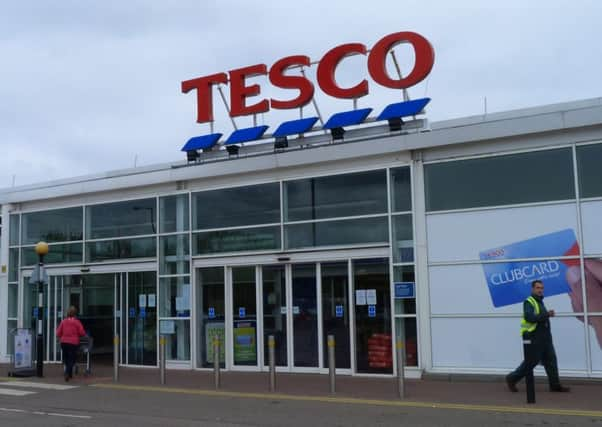Tesco profits slide 28% despite recovery in sales
This article contains affiliate links. We may earn a small commission on items purchased through this article, but that does not affect our editorial judgement.


The group posted a 28.3 per cent fall in bottom-line pre-tax profits to £71 million for the six months to 26 August after being hit amid the sector’s fierce price war.
Its fightback against the discounters helped UK like-for-like sales surge by 0.9 per cent in the second quarter.
Advertisement
Hide AdAdvertisement
Hide AdChief executive Dave Lewis outlined plans to slash costs by £1.5 billion to help get profits back on track. He said the cost-cutting plans would not affect staff, with savings instead being made across areas including the company’s distribution system.
About £550m of the savings will come from changes to how its stores operate, including cutting back further on 24-hour trading and restocking store shelves during the day rather than at night.
Lewis added that the group’s recovery was gaining traction, but cautioned that the market remains “challenging and uncertain”.
He added: “We have made further strong progress in the first half, with positive like-for-like sales growth across all parts of the group as we re-invest in our customer offer whilst rebuilding profitability in a sustainable way.
“The entire Tesco team is focused on serving shoppers a little better every day. We are more competitive across our offer. Prices are more than 6 per cent lower than two years ago, availability and service have never been better and our range is more compelling.”
Tesco’s second-quarter like-for-like sales growth across the UK and Ireland marks a sharp increase on the 0.3 per cent rise seen in the previous three months and comes after a major investment in price cuts.
But the group saw its bottom line suffer from the plan to lower prices, including the recent launch of its new Farm Brands range.
On an underlying basis, UK and Ireland first-half earnings more than doubled to £389m, from £164m a year earlier, while group earnings lifted 60.2 per cent to £596m.
Advertisement
Hide AdAdvertisement
Hide AdThe retailer said it was yet to see an impact from Brexit or the falling pound on the business or costs, but revealed the fallout from the EU referendum result has sent its pension scheme funding gap ballooning by £3.2 billion to £5.9bn.
John Ibbotson of consultancy Retail Vision said: “There’s still a long way to go but Tesco, make no mistake, has started to hit its stride. Its competitors will have cast a nervous eye over these latest results.
“While Tesco is back on track and could soon be dominant again, it’s unlikely to be the imperious force it once was. While improving, its profits are significantly lower than they were in its heyday.”
At the group’s Edinburgh-based Tesco Bank operation, statutory operating profits plunged by almost three-quarters to £22m, down from £86m a year earlier, with earnings hit by a £45m increase in customer redress provisions and £22m of restructuring costs.
Tesco Bank, led by chief executive Benny Higgins, said: “This charge reflects an acceleration in the residual amortisation of the group’s insurance platform, redundancy costs and asset impairment related to the business simplification, and property-related costs relating to the early exit from the group’s office in central Edinburgh.
“The group’s insurance platform will be replaced in 2017 with a new platform offering greater functionality for insurance customers. A further charge of approximately £10m, relating primarily to the accelerated software amortisation, is expected in the second half.”
